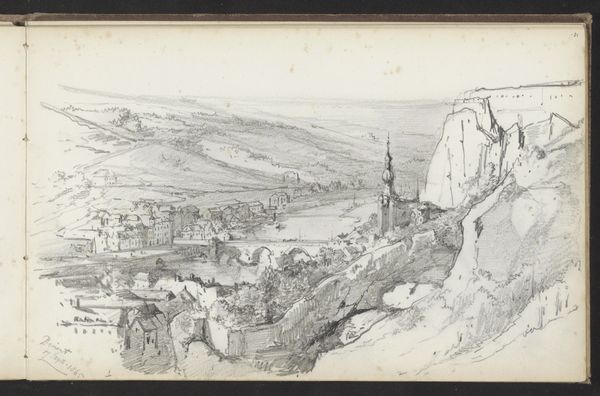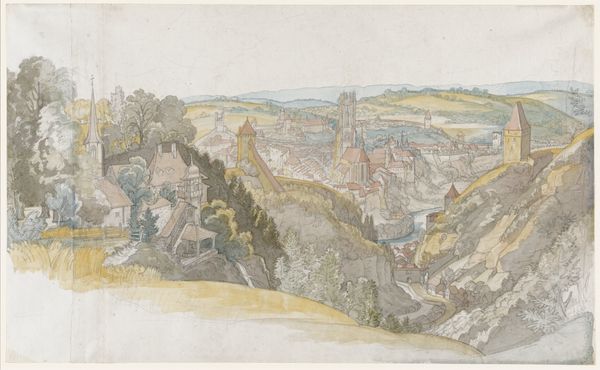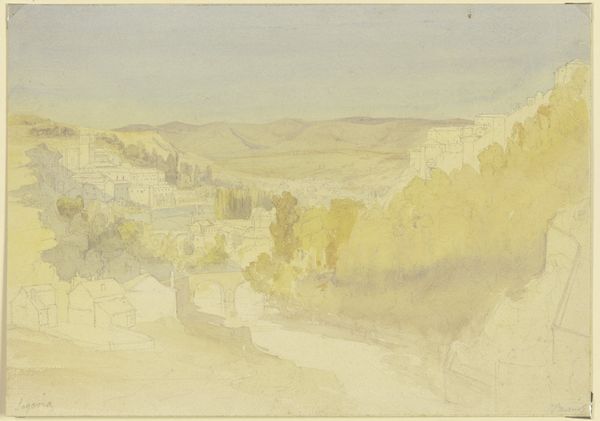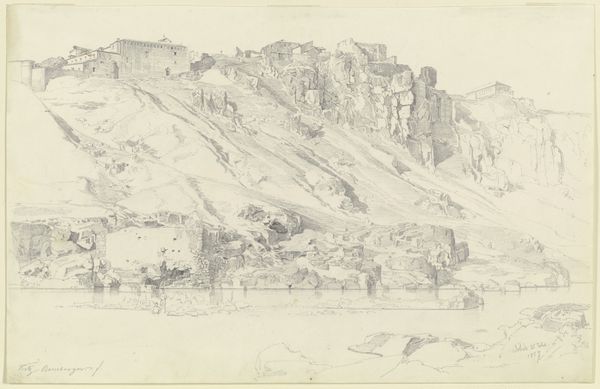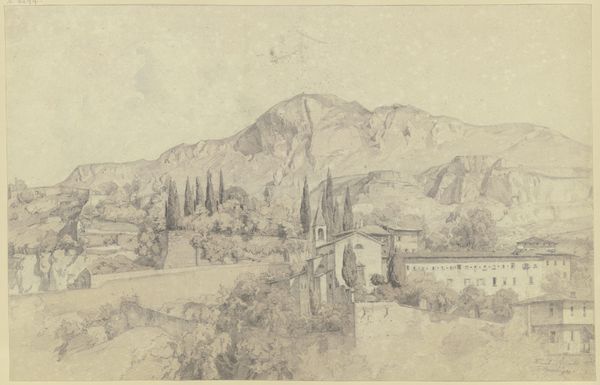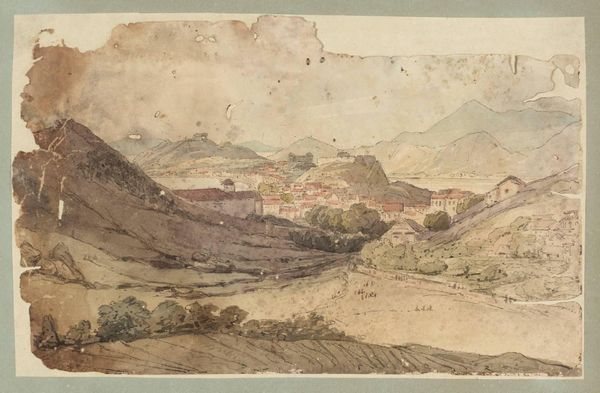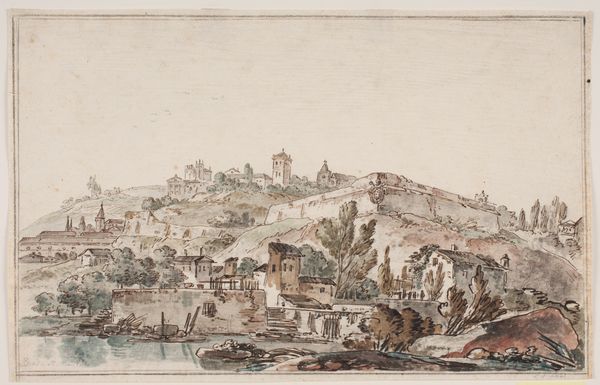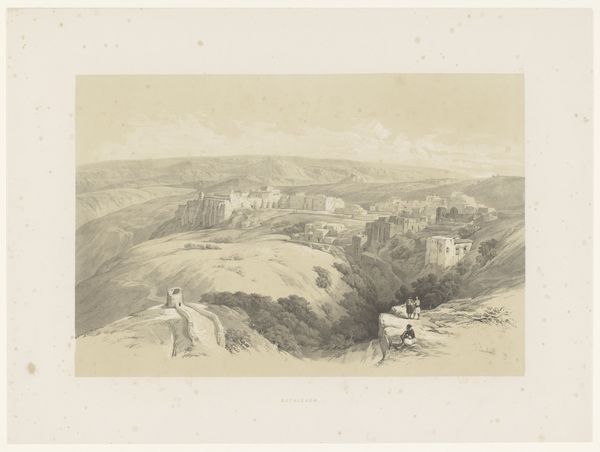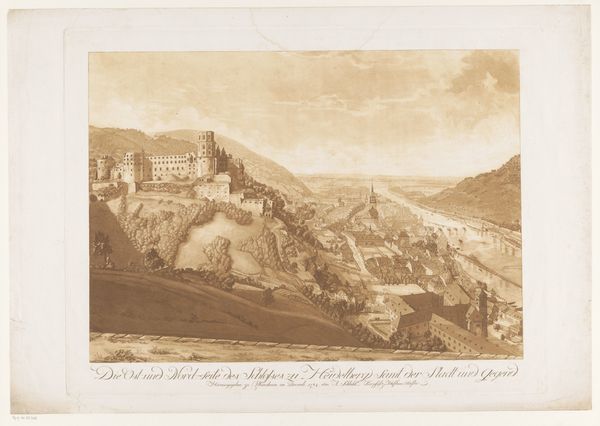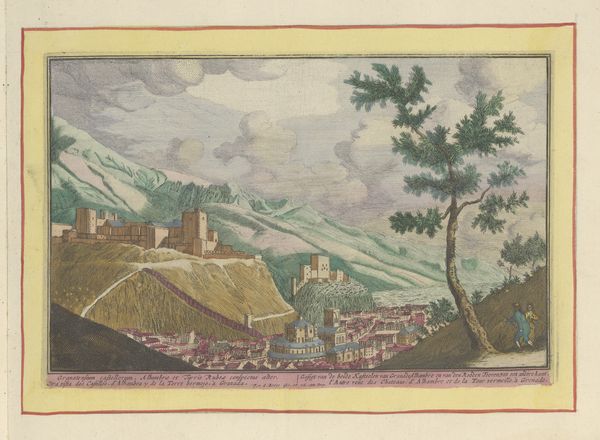
drawing, watercolor
#
drawing
#
water colours
#
landscape
#
mannerism
#
watercolor
#
coloured pencil
#
cityscape
#
watercolor
Dimensions: 370 mm (height) x 496 mm (width) (bladmaal)
Curator: This watercolor and colored pencil drawing is titled "Prospekt af byen Prag," offering a view of Prague as seen through the eyes of Roelant Savery, sometime between 1602 and 1605. Editor: It's striking how the city nestles in the landscape, almost swallowed by the hills. There's something quite fragile and delicate about the rendering. Curator: Yes, and I think that delicacy underscores the socioeconomic realities of the period. Savery, positioned in the Habsburg court, depicts Prague at a fascinating moment in its complex religious and political history. Editor: How so? Looking at the meticulous details, especially of the architecture and the bridge, you can see the painstaking labor involved. Did the patronage system dictate such attention to detail? Curator: Absolutely. It's important to consider the court’s symbolic investment in representing power and urban control. Think about how Savery employs the cityscape itself as a medium to subtly convey messages related to status, religious strife, and emerging social structures within Prague at that time. Editor: I am really curious about the specific colors Savery chose and how they impact the depiction of urban life of Prague in those years. Were there practical limitations to what he could use? And does this then challenge a straightforward interpretation of "reality?" Curator: The muted colors and subtle washes do create an atmospheric quality, suggesting perhaps a veiled commentary on the uncertainties of the era. There's an inherent critique embedded within what’s visible, echoing the tumultuous realities of a city caught between progress and precarity. Editor: It’s amazing how this drawing pushes us to examine both its physical creation and the wider power structures influencing not only the artist, but all of society at the time. Curator: Indeed, and considering how artistic interpretation always leaves room for analysis, these considerations provide new entry points for dialogue around how labor shapes not just art but history too. Editor: This image feels so immediate yet reflects generations of craft. I can see the history in the process and how each detail impacts perception of status and the power it confers. Curator: Exactly. It’s an opportunity to rethink artistic representations as critical reflections of evolving social landscapes.
Comments
No comments
Be the first to comment and join the conversation on the ultimate creative platform.
